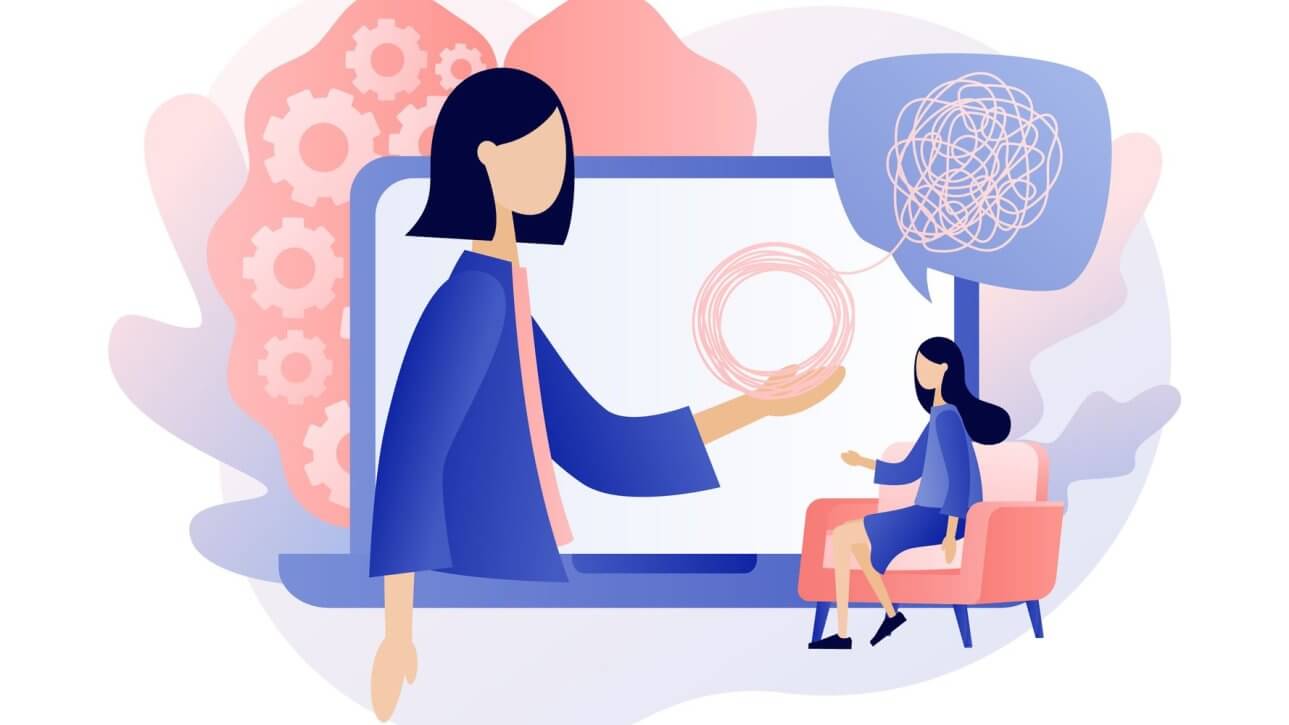Virtual therapy, or teletherapy, is changing the way that mental health practitioners deliver services to their patients. After many face-to-face services were abruptly forced to shut down due to COVID-19, mental health providers continued to care for patients by making the switch to teletherapy, which is a form of care that is conducted by video chat or phone call. At a time of global crisis, ensuring the accessibility of mental health resources remains critical for both practitioners and patients.

Pensacola based Licensed Mental Health Counselor (LMCH) and owner of Laynie Gibson, LMHC made the switch to teletherapy during the height of the pandemic. “From the clinician side of things, I think we were all, myself included, a little freaked out by the idea of moving to teletherapy at the beginning of 2020,” she said. “So much of what we do relies not only on what people are saying but how they’re saying it as well,” she explained.
For Gibson, body language can be an important diagnostic tool in face-to-face therapy and she said it took some adjusting to work without that tool in teletherapy sessions. “How people are moving, or sitting or holding themselves throughout a session is a major element for both practitioners and patients within the therapeutic process,” Gibson said. “I’ve adapted to the little nuances of what it’s like waiting for someone to have an emotional response in a video space, including waiting out things like glitches and poor connections.”
Since teletherapy can be accessed from a patient’s residence, some people may prefer the convenience and comfort of processing their mental health concerns at home.
“I actually prefer online therapy because it’s a lot more convenient,” said Claire, a local teletherapy patient. For Claire, the flexibility of teletherapy is especially helpful because of how her depression affects her own executive function. “When I’m depressed, I can just get on my laptop without having to get up, get ready and drive somewhere,” Claire explained. “I was aware of online therapy before COVID, but I never actually tried it until it was a necessity.”
Like many others who were used to the in-person format, the switch it felt awkward at first. However, as Claire became more comfortable with the format, she began to develop a preference for the service. “It feels safer in some regard to just be talking to a screen instead of a real person,” she said. “The main difference is that you have to bring your own tissues.”
Teletherapy is an extremely versatile resource for people seeking mental health care, especially in a time when global issues continue to cause undue amounts of stress and uncertainty. While personal preferences vary from person to person, Gibson strongly recommends that teletherapy is best for “people who are not in immediate crisis,” as it can be difficult for mental health professionals to step in when a high safety risk presents itself through virtual means.

For people who do prefer teletherapy, the flexibility of the practice can present a multitude of benefits. One such benefit is the ability to choose from a wider range of practitioners than what might be available locally. “If there’s a specific reason why you’re seeking therapy, there’s a therapist out there whose clinical focus is in that area,” Gibson said. Gibson’s own niche involves understanding relationships to oneself and others, as well as LGBTQ+ identity. One of the most important steps of finding a mental health provider is to find the right mental health provider. Counselors each have different specialties and areas of focus that they explored at length during their education. Matching the right provider to individual preferences and needs can make all the difference in creating a successful therapeutic experience.
Despite the many advantages of at-home mental health care, many patients and providers still prefer face-to-face interactions. Gibson recently opened her own practice over the summer and now offers clients in-person sessions. “Because the last couple of years have been what they’ve been, people have been really hungry to come back in person,” she said. “It took me a while to adjust to going back to seeing people in front of me.”
Whether in person or virtual, therapy can be a life saver for those suffering with mental health issues. With the popularity of telehealth on the rise, those in need of a good therapist have plenty of options to choose from. For anyone seeking teletherapy, Psychology Today (psychologytoday. com) keeps an active directory of LMHC’s and mental health providers who are registered in each state. In Pensacola alone, there are approximately 100 teletherapy providers listed on the directory. The directory contains various filters to use when searching for more specific options, such as gender, insurance, age range and therapy style. Verywell Mind (verywellmind.com) has also compiled a ranked list of online companies that offer teletherapy services based on consumer reviews and survey results.
If you or someone you know is suicidal or in emotional distress, call the National Suicide Prevention Lifeline at 1-800-273-8255 to speak with a crisis counselor 24 hours a day, seven days a week. If the situation is potentially life-threatening, get immediate emergency assistance by calling 911.